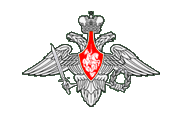|
|
|||||||||
|
The New Russian Army |
|||||||||
|
Well the Russians have finally done it! Its a good thing that they are our "Partners" right
now (see here). With this new weapon if they were
our enemies, they would win hands down... I mean just watch all our Hero
movies... the good guy never shoots the pretty lady (well mostly .. Seems the New Russian Army is not so strict about Uniform
Codes as they used to be... Those "Combat Boots" of the girl in the middle
are certainly 'unusual' So what's this all about? Well it's the Miss Russian
Army beauty contest, sponsored by the The Russian Federation Ministry of
Defence. If they keep this up maybe American's will want to defect to Russia!
but then...
.. |
|||||||||
|
Russian Federation Ministry of Defence
|
|||||||||
| Russia-NATO
and Russia-US Strategic Partnership
NATO-Russia Founding Act on Mutual Relations, Cooperation
and Security
NATO-Russia Council
Russia-NATO, Russia-US partnership objectives
NATO-Russia relations formally began in 1991 at the inaugural session of the North Atlantic Cooperation Council (later renamed the Euro-Atlantic Partnership Council), which was created following the end of the Cold War as a forum for consultation to foster a new cooperative relationship with the countries of Central and Eastern Europe. A few years later, in 1994, Russia joined the Partnership for Peace programme – a major programme of practical security and defence cooperation between NATO and individual Partner countries. In 1996, Russian peacekeepers deployed to Bosnia and Herzegovina to serve alongside Allied counterparts in the NATO-led peacekeeping force. The Russian contribution was the largest non-NATO contingent in the force. On 27 May 1997, in Paris, the NATO-Russia Founding Act on Mutual Relations, Cooperation and Security was signed, providing the formal basis for NATO-Russia relations. It expressed the common goal of building a lasting and inclusive peace in the Euro-Atlantic area and set up the Permanent Joint Council (PJC) as a forum for regular consultation on security issues of common concern, aimed at helping build mutual confidence through dialogue. Much progress was made over the next five years in building mutual confidence and starting to develop a programme of consultation and cooperation. In particular, practical military cooperation in Bosnia and Herzegovina helped foster mutual trust and confidence between the Russian and Allied militaries, essentially predating the political rapprochement that was to follow. However, in early 1999, differences over Kosovo campaign goals understanding led Russia to suspend its participation in the PJC. Nevertheless, several activities continued without interruption, including peacekeeping in Bosnia and Herzegovina. Moreover, Russia played a key diplomatic role in resolving the Kosovo crisis and, in June, when the Kosovo Force was eventually deployed, Russian peacekeepers were a part of it. From 1999 onwards, NATO-Russia relations started to improve significantly. When Lord Robertson became NATO Secretary General in October of that year, he committed himself to breaking the stalemate in NATO-Russia relations. Similarly, in 2000, upon his election as President of Russia, Vladimir Putin announced that he would work to rebuild relations with NATO in a spirit of pragmatism. Several key events also accelerated this process. On 12 August 2000, the nuclear submarine Kursk sunk killing all 118 crewmen aboard, highlighting the urgent need for cooperation between NATO and Russia in responding to such tragic accidents. The terrorist attacks on the United States of 11 September 2001 also served as a stark reminder that concerted international action was needed to effectively tackle terrorism and other new security threats. In the immediate aftermath of the terrorist attacks, Russia opened its airspace for the international coalition’s campaign in Afghanistan and shared intelligence to support the anti-terrorist coalition. High-level contacts between NATO and Russia in the following months, including two meetings of Lord Robertson with President Putin and a meeting of Allied and Russian foreign ministers in December 2001, explored possibilities to give new impetus and substance to the NATO-Russia relationship. Intensive negotiations led to agreement on a joint declaration on “NATO-Russia Relations: A New Quality”, signed by Russian and Allied heads of state and government in Rome on 28 May 2002, which established the NATO-Russia Council. |
|||||||||
| NATO-Russia Founding Act on
Mutual Relations, Cooperation and Security
Founding Act on Mutual Relations, Cooperation and Security between NATO and the Russian Federation Paris, 27 May 1997 PAPER: http://www.mil.ru/eng/1864/12075/12096/12098/index.shtml |
|||||||||
| NATO-Russia Council
PAPER: http://www.mil.ru/eng/1864/12075/12096/12099/index.shtml Russia-NATO, Russia-US partnership objectives PAPER: http://www.mil.ru/eng/1864/12075/12096/12589/index.shtml NRC Organization PAPER: http://www.mil.ru/eng/1864/12075/12096/12099/12100/index.shtml |
|||||||||
| FAIR USE NOTICE: This page contains copyrighted material the use of which has not been specifically authorized by the copyright owner. Pegasus Research Consortium distributes this material without profit to those who have expressed a prior interest in receiving the included information for research and educational purposes. We believe this constitutes a fair use of any such copyrighted material as provided for in 17 U.S.C § 107. If you wish to use copyrighted material from this site for purposes of your own that go beyond fair use, you must obtain permission from the copyright owner. | |||||||||
|
|


